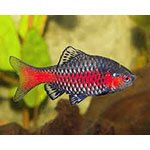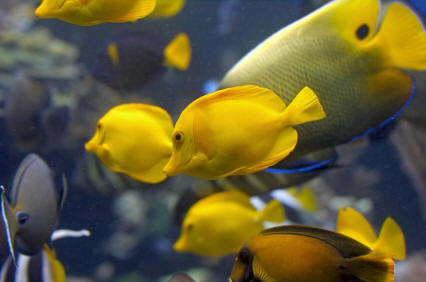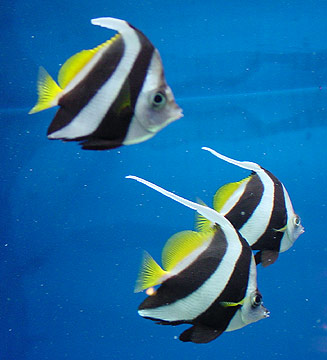Odessa Barb

|
Scientific Name: Puntius padamya Price: Upon Request Origin: Southeast Asia Family: Cyprinidae NOT AVAILABLE NOW |
|
Other Names: Scarlet Barb, Ticto barb, Pethia padamya, Puntius ticto, Puntius sp. |
|
Technical Info
Temperature: 22 - 26 ℃
pH: 7 - 7.5
GH: 8 - 12
Max size: 15 cm
Min Tank size: 200 Ltr
Position in Aqua: No special swimming level
Description
The body of the female is silver and pink with a black spot above the pectoral fin. The male is black to silver in coloration and has a beautiful bright red stripe running horizontally from the head to the tail. They are very beautiful and lively fish that prefer to be in schools.
Food
The Odessa Barb needs to be fed a variety of foods including vegetables as well as meaty foods. Feed a quality flake food as well as freeze dried, live, and frozen foods such as brine shrimp and bloodworms.
Breeding
If you want to try your hand at breeding them you will need a bare bottom tank and you will have to remove the adults after they have fertilized the eggs. It should take 3 to 5 days for the eggs to hatch. Be ready to feed them infusoria for the first few weeks and then baby brine shrimp. Frequent partial water changes (daily) are required during the grow out stages as well.
Compatible with
Generally very peaceful making it an ideal resident of the well-researched community aquarium. Fishes inhabiting similar biotopes in nature, especially comparably-sized, open water-dwelling cyprinids perhaps constitute the best choices but other potential options include balitorid, cobitid, and nemacheilid loaches as well as benthic cyprinids such as Crossocheilus and Garra species. Quite a few fishes from the Ayeyarwady basin are available in the trade including Danio choprae, D. albolineatus, D. kyathit, D. tinwini, D. shanensis, Pethia stoliczkana, P. tiantian, P. ticto, Acanthocobitis botia, Schistura vinciguerrae, Lepidocephalichthys berdmorei, and Crossocheilus latius.

